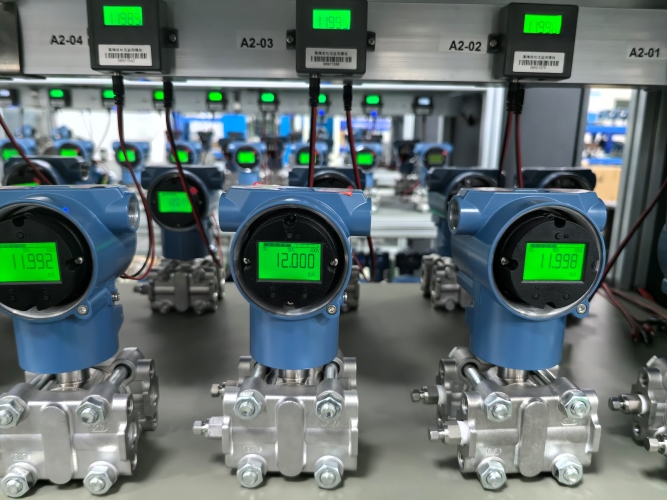
Data Calibration and 48-Hour Aging Test of Differential Pressure Transmitters
2025-02-20 09:40
Differential Pressure Transmitters (DPTs) are essential components used in numerous industries for measuring the pressure differential between two points in a system. These devices convert pressure measurements into electrical signals (commonly in the range of 4-20mA) for easy monitoring and control. To ensure optimal performance, both calibration and aging tests are crucial for maintaining accuracy and long-term stability.
Understanding the Calibration Process
Calibration of Differential Pressure Transmitters is an essential procedure to verify the device’s accuracy. By adjusting the output to match known pressure values, calibration ensures that the device functions within its specifications. Proper calibration helps to prevent inaccuracies and improves system reliability.
Key Calibration Steps
Setup and Connections: The DPT is connected to a known pressure source, ensuring no leaks in the system. The connections must be secure to avoid errors during the calibration process.
Zero Calibration: The device should be set to zero when no pressure is applied. The output signal should reflect a baseline of 4mA.
Span Calibration: Apply a known pressure at the maximum range of the transmitter to ensure the output reaches 20mA. This establishes the full range of the transmitter's capability.
Intermediate Point Calibration: To improve precision, verify the output at intermediate pressure levels—typically at 25%, 50%, and 75% of the full scale.
Final Verification: After completing the calibration, a final verification ensures that the DPT performs accurately across its entire range, and any adjustments are documented.
The Role of the 48-Hour Aging Test
The aging test is a critical process used to assess the long-term reliability and stability of the Differential Pressure Transmitter. By running the transmitter under continuous pressure and environmental conditions, the aging test ensures that the device will perform consistently over time.
How the Aging Test Works
Environmental Setup: The DPT is placed in a controlled environment with regulated temperature, humidity, and pressure levels. These conditions simulate real-world usage.
Continuous Operation: For 48 hours, the DPT is subjected to pressure fluctuations while continuously recording the output signal. This ensures that the transmitter can handle operational stresses.
Signal Drift Monitoring: During the test, the output signal is monitored for any drift or discrepancies that could indicate future failure or loss of accuracy.
Data Analysis: After the 48-hour period, the results are thoroughly analyzed. Any significant deviations from expected performance are flagged, and necessary corrections or adjustments are made.
Aging Test Report: The aging test concludes with a detailed report documenting the transmitter's performance, highlighting any issues found during testing and confirming whether the device meets long-term reliability standards.
Conclusion
Calibration and aging tests are indispensable in ensuring the accuracy, stability, and longevity of Differential Pressure Transmitters. Calibration guarantees precise and consistent measurements in the short term, while the 48-hour aging test evaluates the device's performance over extended periods. Together, these tests ensure that DPTs continue to meet the rigorous demands of industrial systems, delivering reliable performance in critical applications.
